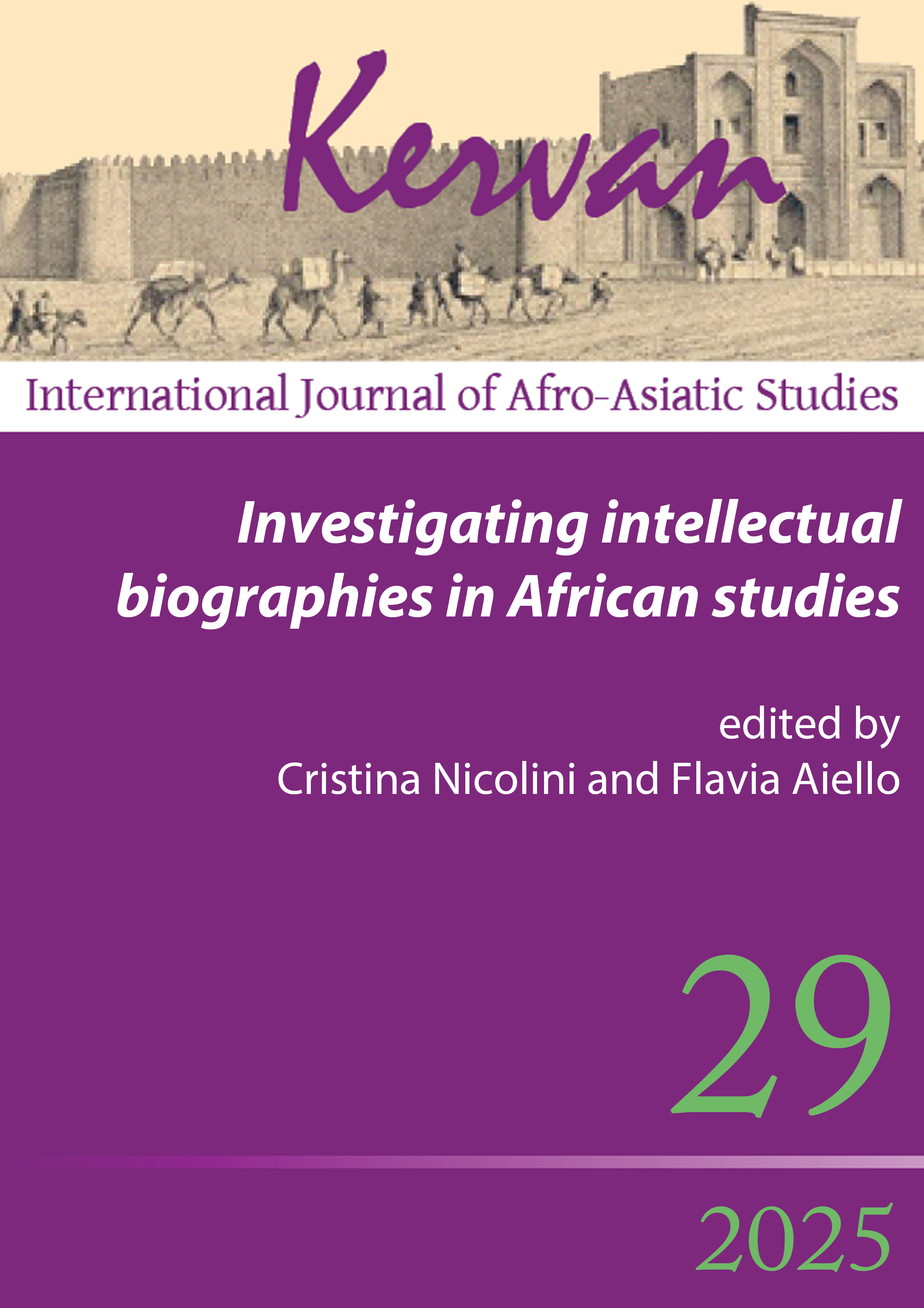Sensing Swahili aesth-ethics with and through Mzee Farouk Topan’s wor(l)dings
DOI:
https://doi.org/10.13135/1825-263X/11896Abstract
In this chapter I argue that intellectual biography as a western scientific method does not allow us to sense Swahili wor(l)ds, because it assumes life (bio-) and (written) work (-graphy) to be separate, primordial entities. In this view, authors and their intellectuality exist prior to—and therefore separately from—their work, and their biographies can be written ‘at a distance’ by somebody else. What if bio- and -graphy were, instead, inseparable and co-constitutive of the ‘becoming intellectual’? How could we then humbly attempt to sense the unfolding becoming of intellectuals with and through their work? Exploring these questions, I engage with Mzee Farouk Mohamed Hussein Tharia Topan’s intellectuality through the Swahili tradition of wasifu, which is not just a fixed and delimitating literary biography compendium. Rather it encompasses a long poetic tradition in oral narrations, and, importantly, it is born across the Indian Ocean, carrying a sense of belonging that is uniquely and specifically Swahili. After introducing the concepting that co-constitutes my reflection, I will attempt to share how I was touched by, and, in reverse, could touch the words of Mzee Farouk in the ways of wasifu, an experience of sensing Swahili aesth-ethics that emerges through his own wor(l)dings (wordings and worldings).
Downloads
Downloads
Published
Issue
Section
License
Gli autori che pubblicano su Kervan accettano le seguenti condizioni:
- Gli autori mantengono i diritti sulla loro opera e cedono alla rivista il diritto di prima pubblicazione dell'opera, contemporaneamente licenziata sotto una Licenza Creative Commons - Attribuzione che permette ad altri di condividere l'opera indicando la paternità intellettuale e la prima pubblicazione su questa rivista.
- Gli autori possono aderire ad altri accordi di licenza non esclusiva per la distribuzione della versione dell'opera pubblicata (es. depositarla in un archivio istituzionale o pubblicarla in una monografia), a patto di indicare che la prima pubblicazione è avvenuta su questa rivista.


 The articles that have appeared on Kervan since 2016 are rated as Class A in the system of National Scientific Qualification (ASN, disciplines 10/N1 and 10/N3).
The articles that have appeared on Kervan since 2016 are rated as Class A in the system of National Scientific Qualification (ASN, disciplines 10/N1 and 10/N3). The journal has been approved for inclusion in DOAJ. The DOAJ listing of the journal is available at
The journal has been approved for inclusion in DOAJ. The DOAJ listing of the journal is available at  The journal has been approved for inclusion in ERIH PLUS. The ERIH PLUS listing of the journal is available at
The journal has been approved for inclusion in ERIH PLUS. The ERIH PLUS listing of the journal is available at  Kervan was just accepted for indexing in SCOPUS. This important milestone ensures that articles published in Kervan are easily found when searching for library, archives and Information science and it enables Kervan authors to keep track of how often their article has been cited by others.
Kervan was just accepted for indexing in SCOPUS. This important milestone ensures that articles published in Kervan are easily found when searching for library, archives and Information science and it enables Kervan authors to keep track of how often their article has been cited by others.
